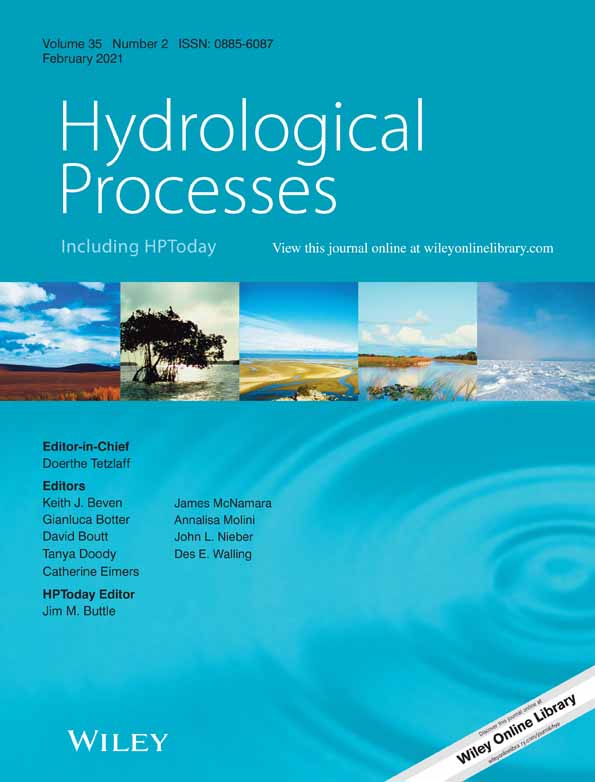Effect of leaf distribution pattern on the interception storage capacity of leaf litter under simulated rainfall conditions
Abstract
Rainwater interception by leaf litter is an important part of forest hydrological processes. The objective of this study was to investigate the interception storage capacity (ISC) of woodland leaf litter for three leaf distribution patterns, one flow path, two flow paths, and three flow paths, manually simulated via one-by-one leaf connection in the top leaf litter layer. A random pattern served as the control. Three different slopes (0°, 5° and 25°, representing flat, gentle and steep slopes, respectively) and two contrasting leaf litters (needle-leaf litter, represented by P. massoniana leaves, and broad-leaf litter, represented by C. camphora leaves) with a biomass of 0.5 kg/m2 per unit area were applied, at a rainfall intensity of 50 mm/h. Results suggested that leaf distribution pattern greatly impacts litter drainage and hence affects leaf litter ISC. The delaying capacity of litter drainage initiation and ISC of broad-leaf litter were higher than those of needle-leaf litter under the same slope conditions. The maximum ISC (Cmax) and minimum ISC (Cmin) of leaf litter at flat and gentle slopes were higher than those at steep slope. Cmin of the broad-leaf litter was two times higher than that of needle-leaf litter on average. When raindrops reached the litter layer, some were temporarily intercepted by the top litter layer while others infiltrated leaf litter sublayer along leaf edges, and in the process, some rainwater flowed through litter layer and contributed to lateral litter drainage along the potential flow path formed by leaves. The lateral litter drainage of broad-leaf litter was higher than that of needle-leaf litter, and the partitioning of rainwater into lateral litter drainage increased with increases in slope. The difference in leaf litter Cmax among different slopes and leaf shapes decreased with flow path increasing. Therefore, leaf distribution pattern notably impact leaf litter ISC, which is similar to leaf shape and slope impacts. On inclined slopes, avoiding leaf accumulation to form flow path is helpful for improving ISC.
CONFLICT OF INTEREST
The authors declare no conflict of interests.
Open Research
DATA AVAILABILITY STATEMENT
The data that support the findings of this study are available from the corresponding author upon reasonable request.




